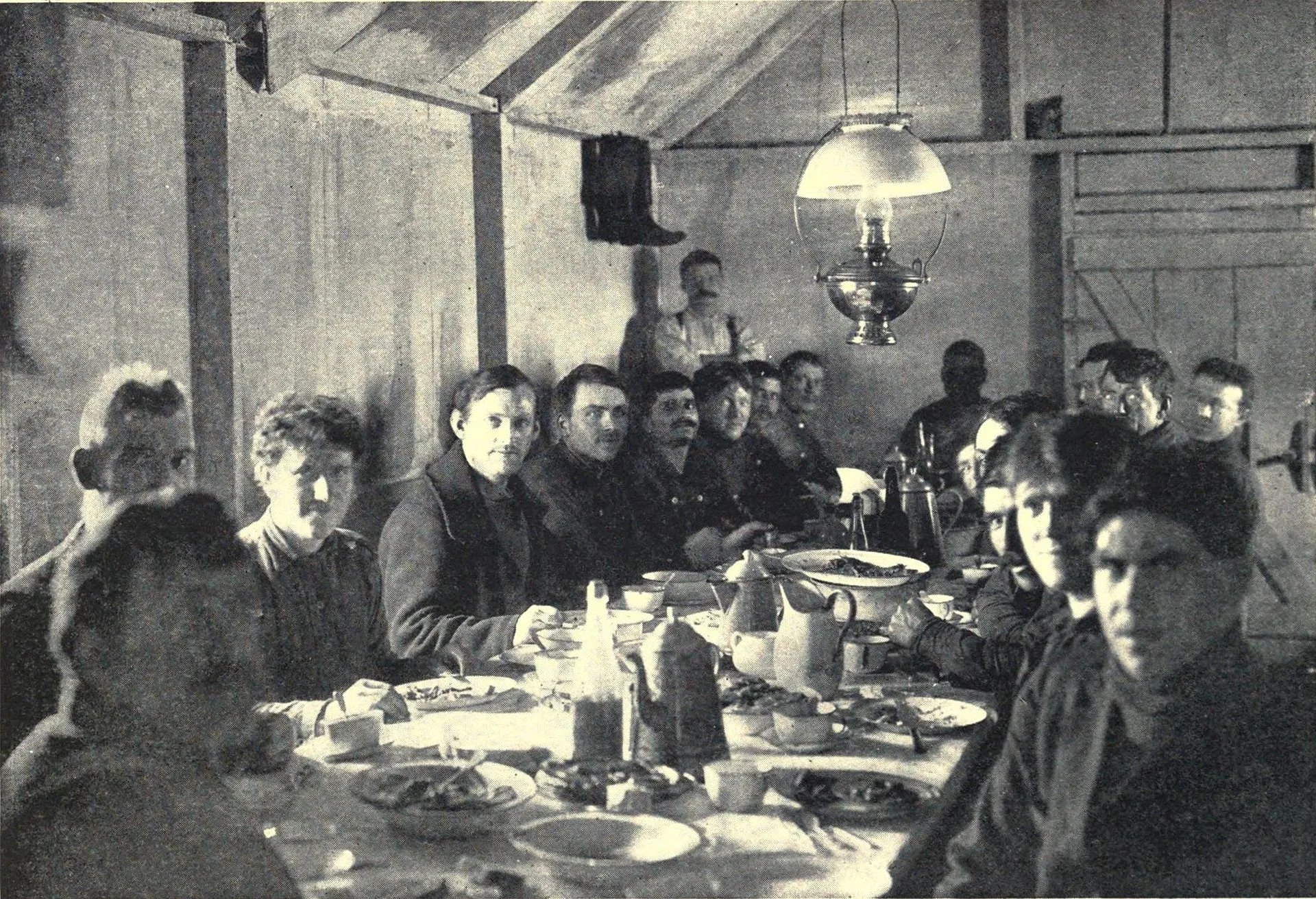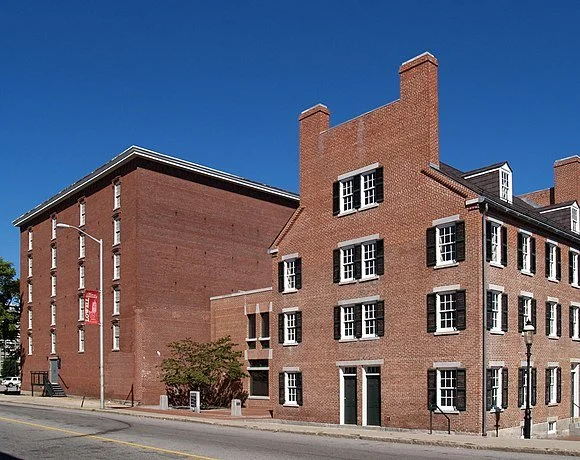Use boarding houses to reduce housing problem
Early-20th-Century dinner in a miners' boarding house in northern Canada.
Adapted from Robert Whitcomb’s “Digital Diary,’’ in GoLocal24.com
Housing, its lack thereof and its expense, continues to be a big issue in Rhode Island. One way to alleviate the crisis in “affordable housing,’’ at least for single people, would be to encourage a revival of that old standby, the boarding house.
Or maybe call them dorms.
Put up buildings, subsidized or not, with one-bedroom units, each with a bathroom, bed, table, chair and utilities, including Internet. Obviously, you could provide far more units than with a conventional apartment house, which would attract developers.
There could be a central kitchen, maybe on each floor, with food lockers for each tenant and maybe some central lounge/living room.
Such housing would be particularly handy for young or other single people, retirees, people in transitory service jobs, and those between long-term housing. Building them near public transit would make them even more useful.
It might even reduce, a little, the pressure for sprawl development that the pandemic has depressingly accelerated, especially with the rapid increase in remote work, while helping to moderate housing-cost inflation. This sprawling is chewing up yet more countryside, increasing air and water pollution and stressing municipalities trying to serve a population that’s becoming even more spread out and car-dependent.
At right, one of the last remaining structures built as a boarding house for 19th Century textile workers in Lowell, Mass.. It’s now part of the Lowell National Historical Park.

